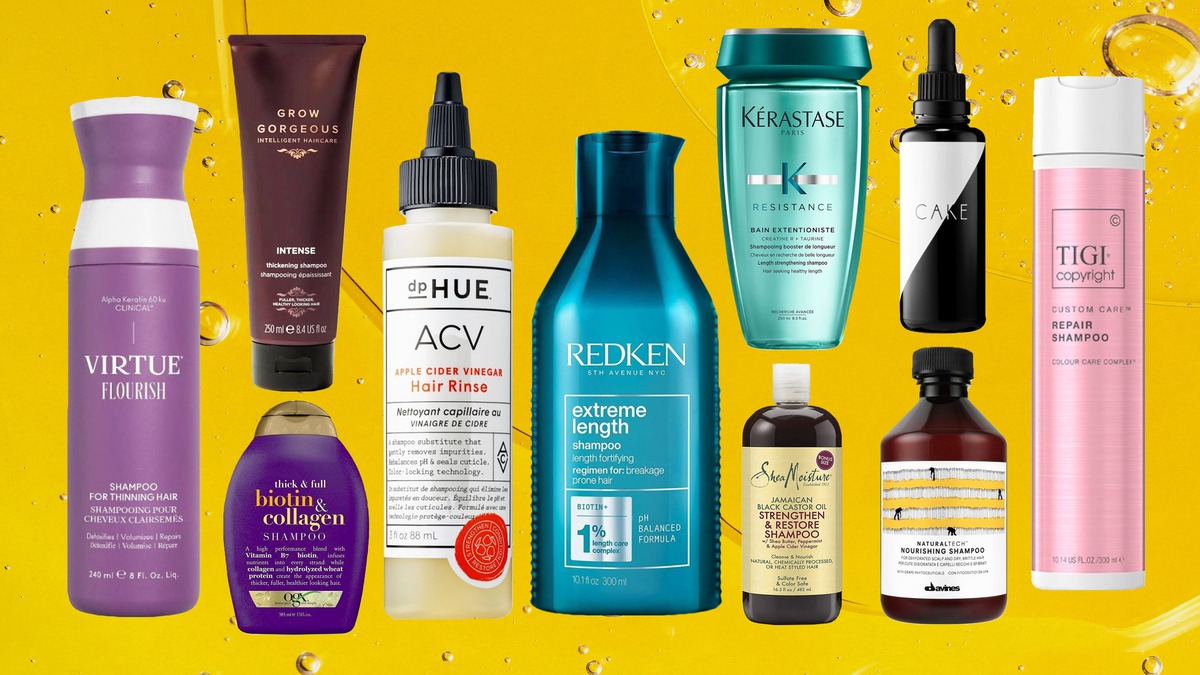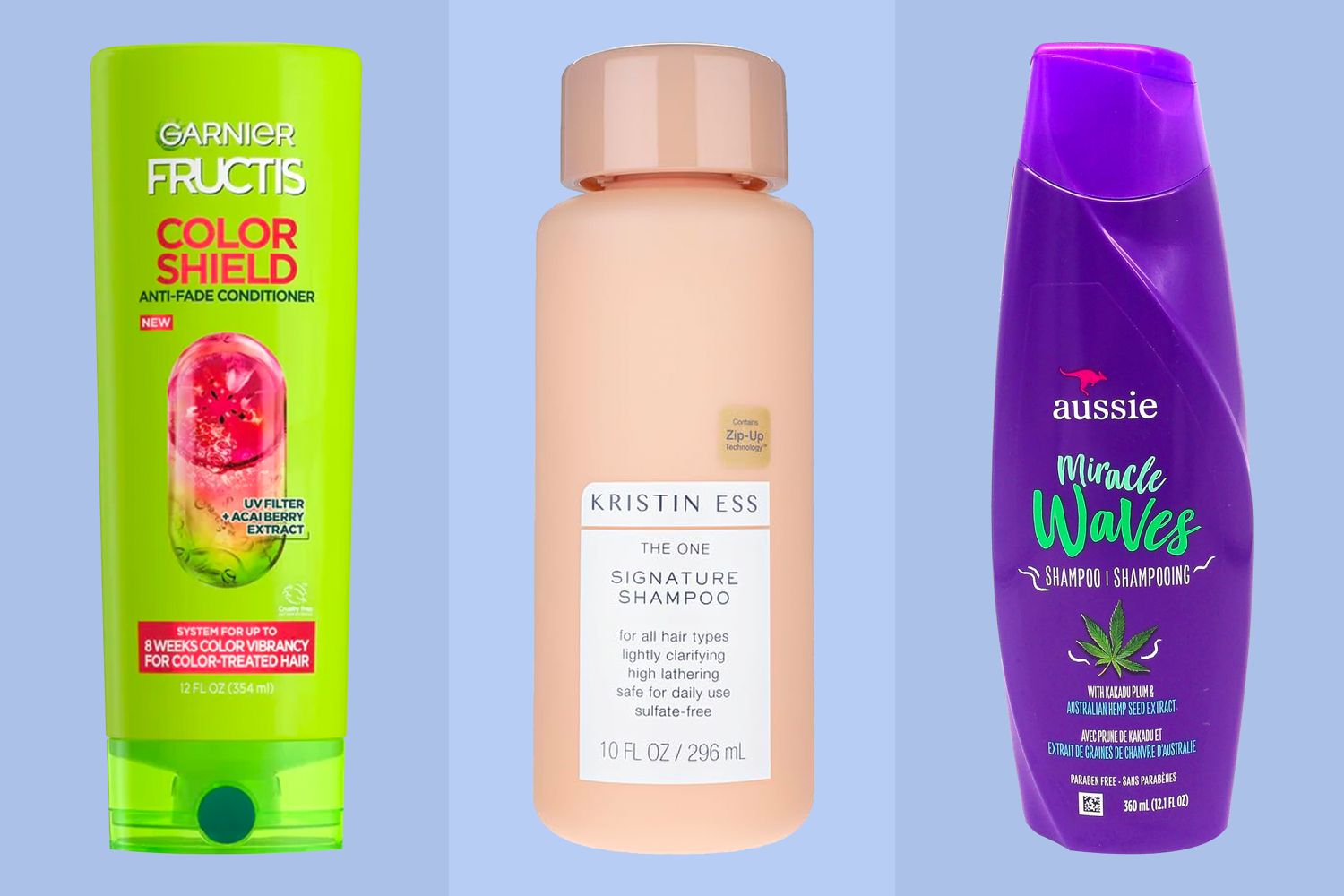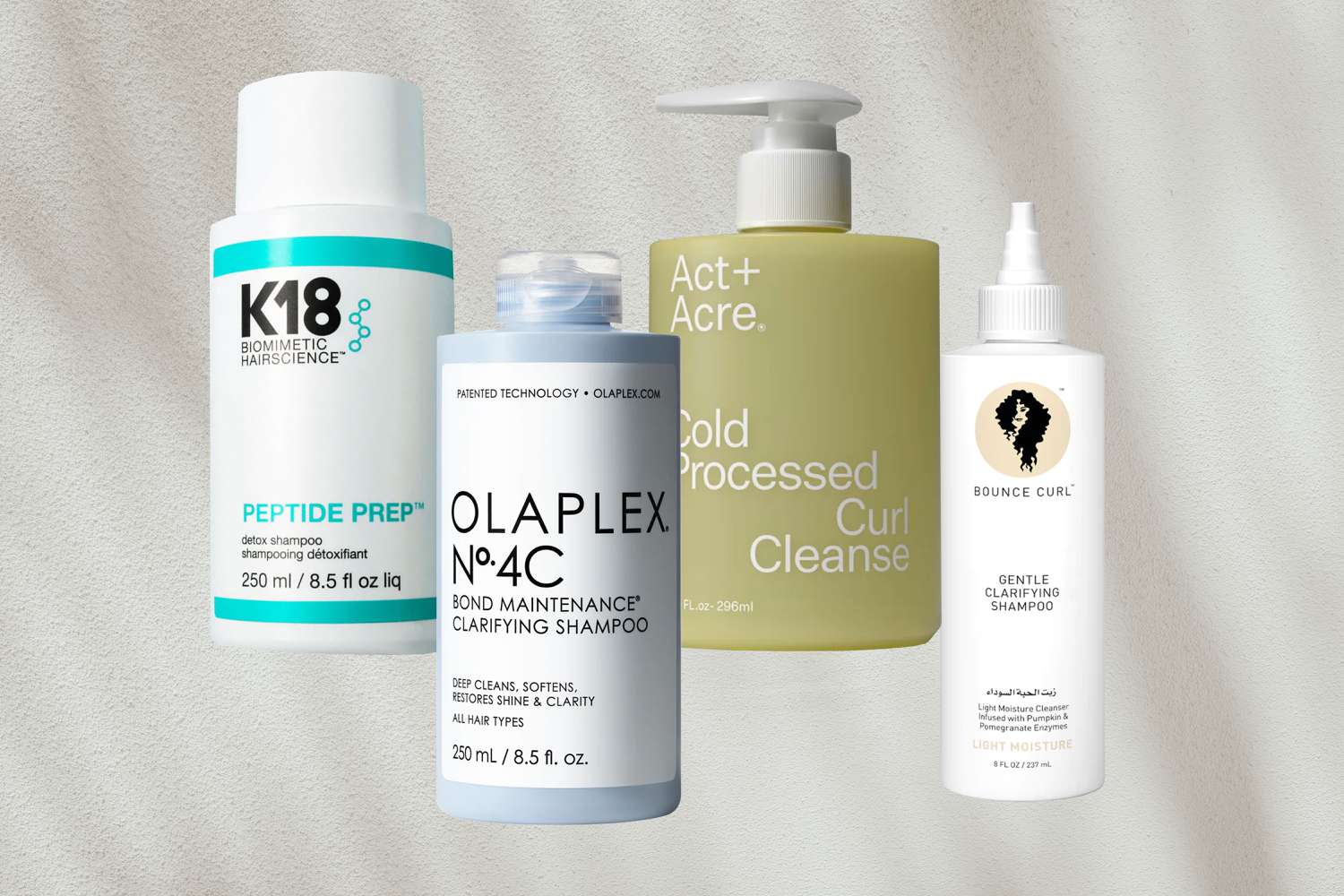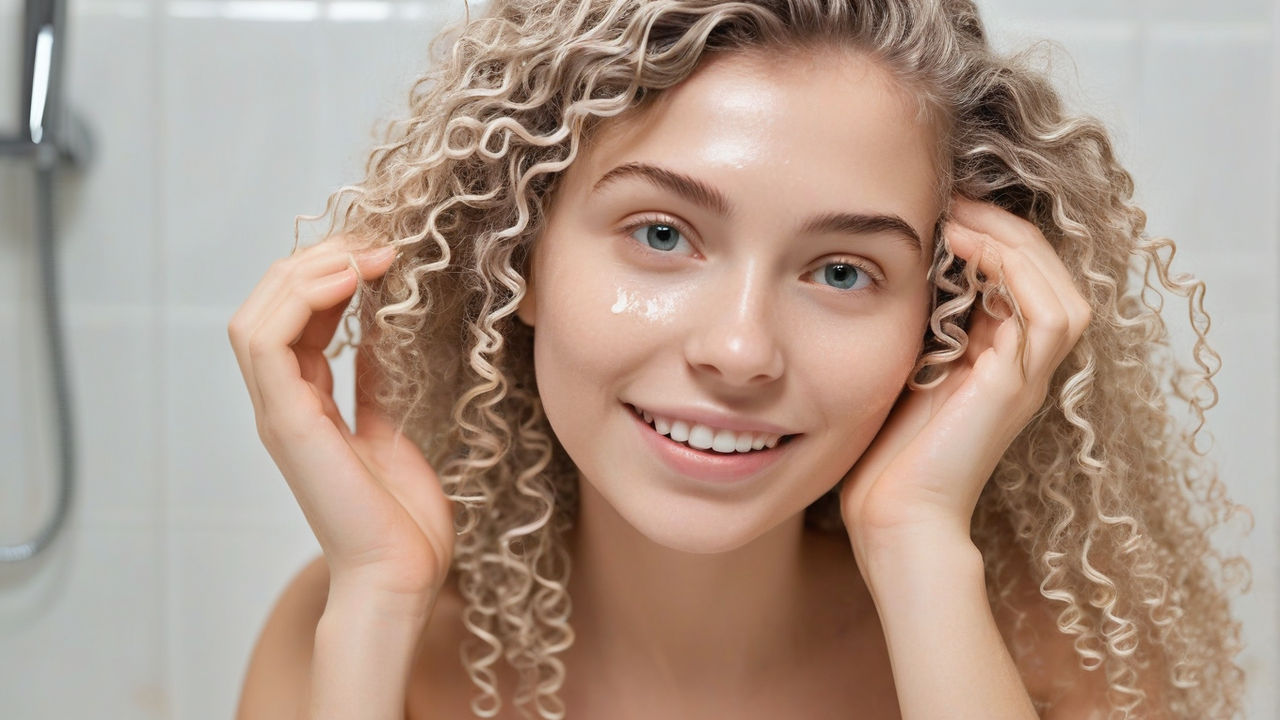The Rise of Sulfate-Free Shampoos: Benefits and Best Practices

Sulfate-free shampoos have seen a surge in popularity over recent years. As consumers become more health-conscious and informed about the ingredients in their personal care products, there’s a growing trend towards gentler, more natural alternatives. This shift is particularly evident in the hair care industry, where sulfate-free shampoos are now prominently featured on store shelves and heavily marketed by both niche and mainstream brands.
Brief Overview of the Rise in Popularity of Sulfate-Free Shampoos
The movement towards sulfate-free shampoos is part of a broader trend emphasizing holistic health and wellness. Many people are turning to these products in an effort to avoid harsh chemicals and synthetic ingredients that can potentially damage hair and irritate the scalp. Social media influencers and beauty bloggers have also played a significant role in this shift, sharing their positive experiences with sulfate-free options and educating their followers on the benefits. Additionally, the increased availability of these products, from high-end salons to local drugstores, has made it easier for consumers to make the switch.
Explanation of What Sulfates Are and Why They Are Commonly Used in Shampoos

What Are Sulfates?
Sulfates are a type of surfactant, which are compounds that lower the surface tension between two substances, such as a solid and a liquid. In the context of shampoos, the most commonly used sulfates are Sodium Lauryl Sulfate (SLS) and Sodium Laureth Sulfate (SLES). These ingredients are responsible for creating the rich, foamy lather that many people associate with effective cleansing.
Definition of Sulfates
Sodium Lauryl Sulfate (SLS) and Sodium Laureth Sulfate (SLES) are the two most prevalent types of sulfates found in shampoos. SLS is a detergent and surfactant known for its strong cleaning ability and high foaming power. SLES, a milder derivative of SLS, is often used because it produces less irritation while still offering good cleansing and foaming properties. Despite their chemical differences, both compounds function similarly in personal care products.
Common Uses in Personal Care Products
Sulfates are widely used in various personal care products beyond shampoos. You can find them in body washes, toothpastes, facial cleansers, and even household cleaning agents. Their primary role in these products is to create a lather that helps lift dirt and oil from surfaces, making them easier to rinse away. This lathering action is particularly appealing in products like shampoos and body washes, where consumers equate foam with cleanliness and efficacy.
The Cleaning and Foaming Action of Sulfates
The cleaning power of sulfates comes from their ability to attract both water and oil molecules. When you apply a sulfate-containing shampoo to your hair, the sulfates surround the oil and dirt particles, allowing them to be washed away with water. This process is highly efficient, which is why sulfates are so effective at cleaning.
The foaming action of sulfates is another key characteristic that makes them popular in personal care products. When sulfates mix with water and air, they create bubbles that form a thick lather. This foamy texture not only helps distribute the product evenly through hair but also gives users a tactile sense of cleansing. However, while this foam can make the hair feel clean, it can also strip away essential natural oils, potentially leading to dryness and irritation.
Why Go Sulfate-Free?
Potential Negative Effects of Sulfates on Hair and Scalp
Dryness and Irritation
Sulfates, due to their strong cleansing properties, can strip the scalp and hair of natural moisture. This can result in dryness, making the hair brittle and more prone to breakage. For the scalp, this can mean irritation and discomfort, particularly for those with sensitive skin or conditions like eczema.
Stripping Natural Oils
Natural oils produced by the scalp are essential for maintaining healthy hair. They provide moisture, protection, and a natural shine. Sulfates can remove these oils along with dirt and impurities, leaving hair feeling clean but often too clean. This over-stripping can disrupt the scalp’s natural balance, leading to oil overproduction or a perpetually dry scalp.
Color-Treated Hair Fading Faster
For individuals with color-treated hair, sulfates can be particularly problematic. The harsh cleaning agents can cause hair color to fade more quickly, as they strip away the color molecules along with dirt and oil. This necessitates more frequent color touch-ups, which can be both time-consuming and costly.
Benefits of Sulfate-Free Shampoos
Gentle Cleansing
Sulfate-free shampoos use milder cleansing agents that effectively clean hair without the harsh stripping effects of sulfates. This gentle cleansing action is suitable for all hair types, including curly, wavy, and textured hair, which can be more susceptible to dryness and damage.
Maintaining Natural Oils
By preserving the hair’s natural oils, sulfate-free shampoos help maintain the hair’s natural moisture balance. This results in hair that feels softer, looks shinier, and is less prone to damage and breakage.
Better for Sensitive Scalps
For those with sensitive scalps or skin conditions like eczema or psoriasis, sulfate-free shampoos are often recommended. The milder ingredients reduce the risk of irritation, itching, and inflammation, providing a more comfortable and soothing hair-washing experience.
Prolonging Color in Dyed Hair
Sulfate-free shampoos are particularly beneficial for color-treated hair. By avoiding harsh detergents, these shampoos help to preserve the vibrancy and longevity of hair color, reducing the need for frequent re-dyeing and helping to keep hair looking fresh and vibrant for longer.
Ingredients to Look for in Sulfate-Free Shampoos

Alternative Cleansing Agents
Sulfate-free shampoos use gentler alternatives to sulfates that still offer effective cleansing without the harsh side effects. Some of these include:
- Cocamidopropyl Betaine: Derived from coconut oil, this mild surfactant helps to create a rich lather and cleanses the hair gently, making it suitable for sensitive scalps.
- Decyl Glucoside: A biodegradable and gentle surfactant derived from glucose and coconut oil, known for its mildness and ability to maintain the hair’s natural moisture balance.
- Sodium Cocoyl Isethionate: Another coconut-derived surfactant, it’s mild and effective at cleansing without stripping the hair of its natural oils.
These alternative cleansing agents ensure that your hair is clean and fresh without the harshness of traditional sulfates.
Hydrating and Nourishing Ingredients
To counteract any potential dryness and to keep hair healthy and moisturized, look for shampoos that include hydrating and nourishing ingredients such as:
- Aloe Vera: Known for its soothing and moisturizing properties, aloe vera helps to hydrate the scalp and hair, promoting softness and shine.
- Argan Oil: Rich in essential fatty acids and antioxidants, argan oil deeply moisturizes the hair, repairs damage, and enhances shine and smoothness.
- Shea Butter: Packed with vitamins and fatty acids, shea butter is excellent for moisturizing and nourishing dry or damaged hair, leaving it softer and more manageable.
These ingredients help maintain the health and vitality of your hair by providing essential hydration and nutrients.
Botanical Extracts and Essential Oils for Added Benefits
Botanical extracts and essential oils can offer a variety of additional benefits, including enhancing hair health, adding fragrance, and providing therapeutic properties:
- Tea Tree Oil: Known for its antifungal and antibacterial properties, tea tree oil can help maintain a healthy scalp, reduce dandruff, and alleviate itching.
- Lavender Oil: Besides its calming scent, lavender oil can promote hair growth and reduce hair thinning.
- Chamomile Extract: Chamomile is soothing and can enhance the natural highlights in hair, making it appear shinier and more vibrant.
- Peppermint Oil: Provides a cooling sensation and can stimulate blood circulation in the scalp, promoting healthy hair growth.
Incorporating these botanical extracts and essential oils can elevate your hair care routine, providing both aesthetic and therapeutic benefits.
How to Choose the Right Sulfate-Free Shampoo for Your Hair Type

Identifying Your Hair Type and Specific Needs
Before you can choose the best sulfate-free shampoo, it’s essential to understand your hair type and its specific needs. Hair can generally be categorized as:
- Oily: Hair that becomes greasy quickly and needs frequent washing.
- Dry: Hair that lacks moisture and may be prone to frizz and breakage.
- Curly: Hair that forms natural curls or waves, often needing extra moisture and definition.
- Color-Treated: Hair that has been dyed or chemically treated, requiring gentle care to maintain color and health.
Understanding your hair type helps in selecting the ingredients and formulations that will best support your hair’s health and appearance.
Matching Ingredients and Formulations to Hair Types
Once you know your hair type, look for sulfate-free shampoos with ingredients and formulations tailored to your specific needs:
- For Oily Hair: Choose a sulfate-free shampoo with ingredients like tea tree oil or peppermint oil, which help to control oil production and keep the scalp clean without over-drying. Look for lightweight formulas that won’t weigh your hair down.
- For Dry Hair: Opt for shampoos containing hydrating ingredients like aloe vera, argan oil, and shea butter. These ingredients provide intense moisture and nourishment, helping to restore softness and reduce frizz.
- For Curly Hair: Seek out sulfate-free shampoos with moisturizing and defining ingredients such as coconut oil, glycerin, and shea butter. These components help enhance curl definition, reduce frizz, and maintain hydration.
- For Color-Treated Hair: Use shampoos formulated with color-protecting ingredients like sunflower oil, vitamin E, and UV filters. These ingredients help to preserve color vibrancy and protect hair from damage caused by environmental factors.
Recommendations for Different Hair Concerns
Here are some recommendations for sulfate-free shampoos tailored to various hair concerns:
- For Oily Hair: Try a shampoo like the Paul Mitchell Tea Tree Special Shampoo, which helps to balance oil production and soothe the scalp with tea tree oil and peppermint.
- For Dry Hair: Consider a shampoo such as the Maui Moisture Heal & Hydrate + Shea Butter Shampoo, which is rich in shea butter, coconut oil, and macadamia oil for deep hydration.
- For Curly Hair: Look into the DevaCurl No-Poo Original Zero Lather Conditioning Cleanser, which is designed to cleanse without stripping natural oils and is infused with grapeseed oil and peppermint.
- For Color-Treated Hair: The Pureology Hydrate Shampoo is an excellent choice, featuring a blend of jojoba, green tea, and sage to nourish and protect color-treated hair.
Popular Sulfate-Free Shampoo Brands and Products
Overview of Well-Known Sulfate-Free Shampoo Brands
Several brands have established themselves as leaders in the sulfate-free shampoo market. These brands are known for their commitment to using gentle, natural ingredients and avoiding harsh chemicals:
- Pureology: Known for its high-performance hair care products, Pureology offers a range of sulfate-free shampoos that cater to color-treated and damaged hair.
- Maui Moisture: This brand focuses on using aloe vera as a base ingredient, combined with tropical botanicals, to create deeply hydrating and nourishing formulas.
- DevaCurl: Specializing in products for curly hair, DevaCurl’s sulfate-free shampoos are designed to cleanse while enhancing curl definition and maintaining moisture.
- SheaMoisture: With a strong emphasis on natural and organic ingredients, SheaMoisture offers a variety of sulfate-free shampoos for different hair types and needs.
- Aveeno: Known for its gentle and soothing formulations, Aveeno’s sulfate-free shampoos often incorporate oat and other calming ingredients, making them ideal for sensitive scalps.
Highlighting Top-Rated Sulfate-Free Shampoos
Here are some top-rated sulfate-free shampoos that have received widespread acclaim for their effectiveness and quality:
- Pureology Hydrate Shampoo: This shampoo is formulated with jojoba, green tea, and sage, providing intense hydration and protection for color-treated hair. Users appreciate its ability to keep hair soft and vibrant without fading color.
- Maui Moisture Heal & Hydrate + Shea Butter Shampoo: Packed with shea butter, coconut oil, and macadamia oil, this shampoo is praised for its rich moisturizing properties that transform dry, damaged hair into smooth and shiny locks.
- DevaCurl No-Poo Original Zero Lather Conditioning Cleanser: This unique no-lather formula cleanses without stripping natural oils, making it a favorite among those with curly and wavy hair. It helps maintain curl definition and moisture balance.
- SheaMoisture Raw Shea Butter Moisture Retention Shampoo: Formulated with shea butter, argan oil, and sea kelp, this shampoo is designed to restore and retain moisture in dry, damaged hair. Customers love its nourishing effects and pleasant fragrance.
- Aveeno Scalp Soothing Oat Milk Blend Shampoo: This gentle shampoo uses oat milk to soothe and nourish the scalp, making it ideal for those with sensitive or irritated skin. It is well-loved for its calming properties and mild scent.
Reviews and Customer Testimonials
Customer reviews and testimonials offer valuable insights into the effectiveness and satisfaction levels of these sulfate-free shampoos:
- Pureology Hydrate Shampoo: Customers rave about its luxurious feel and ability to keep color-treated hair vibrant and healthy. One user mentioned, “This shampoo has saved my color! My hair feels so soft and looks shiny.”
- Maui Moisture Heal & Hydrate + Shea Butter Shampoo: Users appreciate its rich moisturizing effect, with one reviewer stating, “My hair has never felt so hydrated. It’s soft, manageable, and smells amazing.”
- DevaCurl No-Poo Original Zero Lather Conditioning Cleanser: Curly-haired users highlight its effectiveness in maintaining curls without frizz. A customer shared, “My curls are defined and bouncy. This cleanser is a game-changer!”
- SheaMoisture Raw Shea Butter Moisture Retention Shampoo: Reviewers commend its deep nourishing qualities, with feedback like, “My hair was dry and brittle, but this shampoo brought it back to life. It’s soft and healthy now.”
- Aveeno Scalp Soothing Oat Milk Blend Shampoo: Customers with sensitive scalps appreciate its soothing effect. One testimonial reads, “This shampoo has calmed my scalp irritation and left my hair feeling clean and soft.”
Transitioning to Sulfate-Free Shampoos
Tips for Making the Switch
- Gradual Introduction: Start by alternating between your regular shampoo and a sulfate-free option. This gradual transition can help your hair and scalp adjust without causing too much disruption.
- Choose the Right Product: Select a sulfate-free shampoo that suits your hair type and specific needs. Look for key ingredients like honey for moisture or essential oils for scalp health.
- Follow Up with Conditioner: Always use a good conditioner after shampooing. Sulfate-free shampoos cleanse gently but may not provide as much detangling as sulfate-containing ones, so a conditioner helps keep your hair smooth and manageable.
- Rinse Thoroughly: Make sure to rinse your hair thoroughly to remove all product residues. This can prevent buildup and ensure your hair feels clean and light.
- Be Patient: Give your hair some time to adjust. It may take a few weeks for your scalp and hair to adapt to the new routine, so be patient and consistent.
What to Expect During the Transition Period
During the initial weeks of switching to a sulfate-free shampoo, you might notice some changes in your hair and scalp. Here’s a list of what you might experience:
- Less Lather: Sulfate-free shampoos tend to produce less foam compared to sulfate-containing shampoos. This doesn’t mean they’re less effective; they just have a different formulation.
- Hair Texture Changes: Your hair might feel different as it adjusts to the new product. It may seem oilier or drier initially, but this is normal and should balance out over time.
- Scalp Adjustment: Your scalp might take some time to regulate oil production. It could become oilier or drier initially, but it should stabilize within a few weeks.
Addressing Common Issues and Solutions
Here are some common issues you might encounter during the transition to sulfate-free shampoos and how to address them:
- Greasy Hair: If your hair feels greasier than usual, try extending the time between washes to allow your scalp to balance oil production. You can also use a dry shampoo to absorb excess oil.
- Dry Hair: If your hair feels dry, consider incorporating a deep conditioning treatment or a hair mask once a week. Ingredients like honey and argan oil can provide great moisture and nourishment.
- Product Buildup: Without sulfates, you might notice some product buildup over time. Use a clarifying shampoo once a month to cleanse your scalp and hair thoroughly.
- Scalp Irritation: If you experience any scalp irritation, ensure you’re rinsing your hair thoroughly to remove all product residue. Also, check the ingredients for any potential allergens and consider switching to a different sulfate-free formula if necessary.
